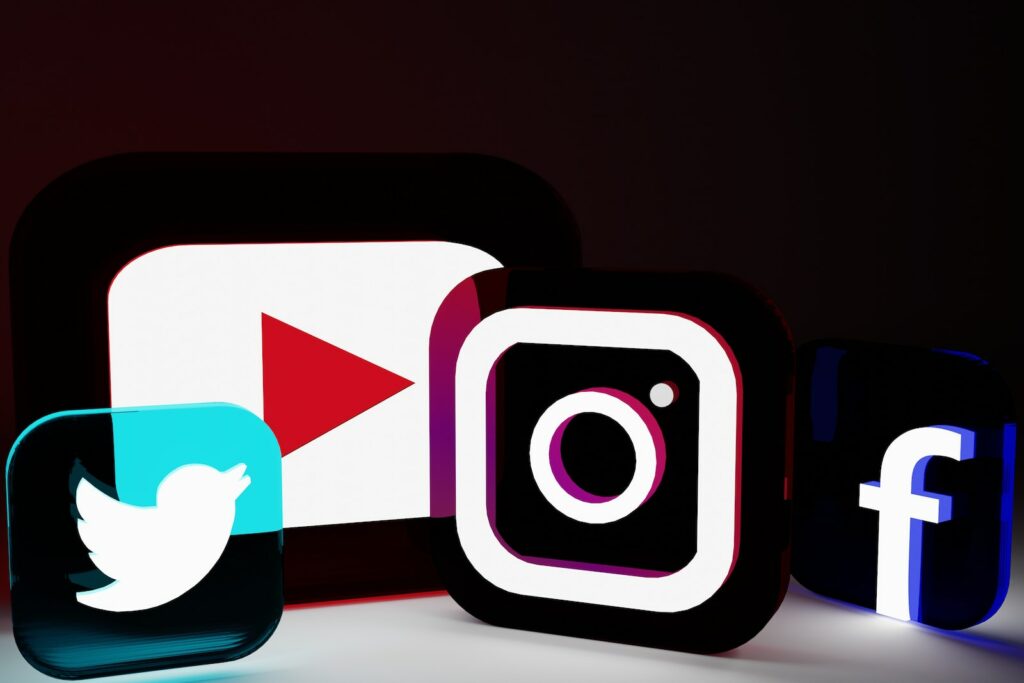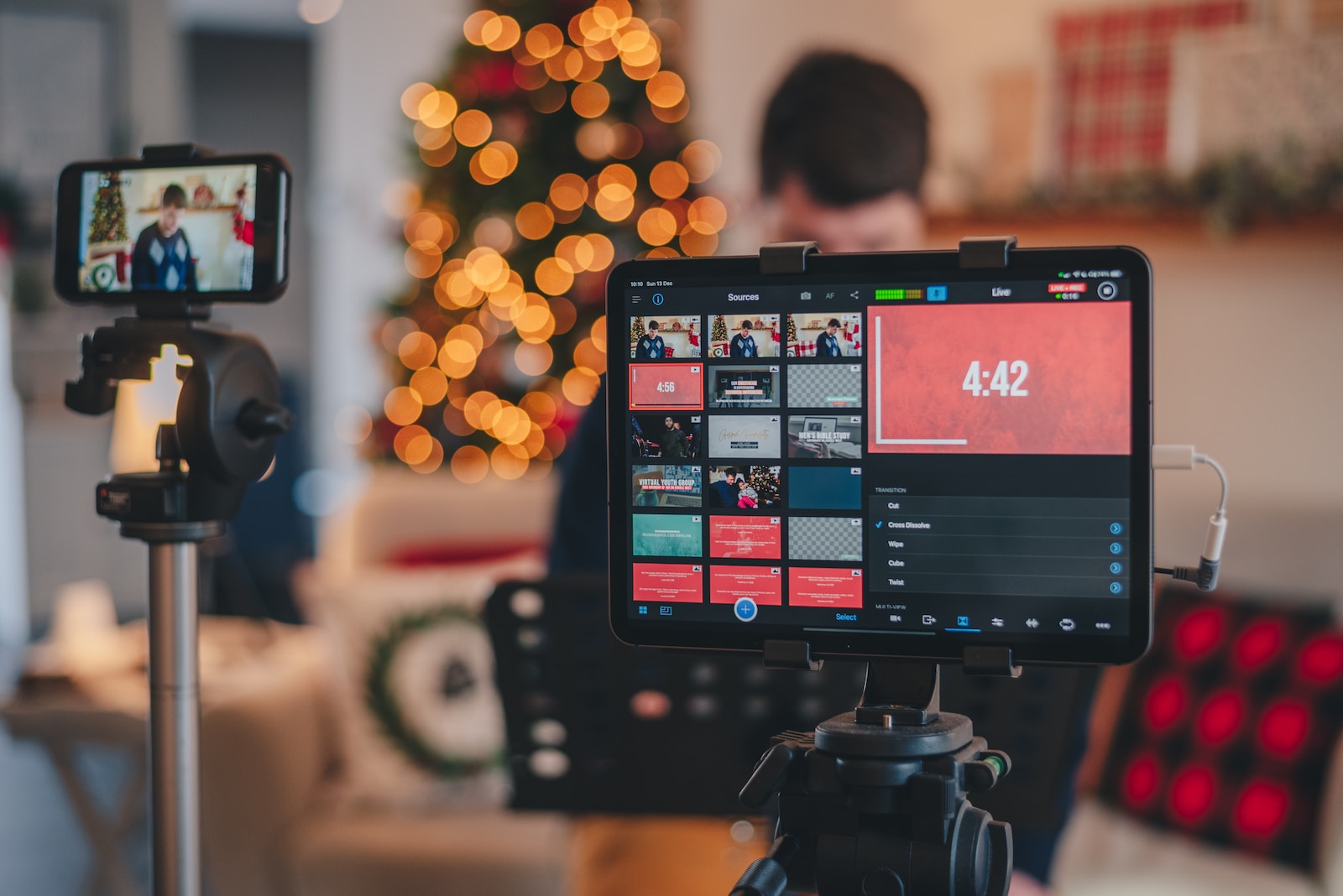Navigating the vast world of social media can be overwhelming, especially when trying to determine what content works best for each platform. Did you know that different types of content resonate differently with audiences on various social platforms?
In this article, we aim to guide you in tailoring your posts, enhancing engagement, and reaching your desired audience effectively.
Dive in; success is just a few scrolls away!
Different Types of Social Media Content
Social media content can take various forms, including short-form videos, audio chat, live rooms, content that reflects brand values, user-generated content, funny and relatable posts, as well as shoppable content.
Video (Short Form)
Short-form videos are making waves in the realm of social media content. Platforms like Instagram, TikTok, and Facebook have embraced this quick, dynamic format for its power to captivate audiences. It is one of the best types of content on any social network that people use.
The magic lies in their brevity; they are designed to deliver a punchy message in just a handful of seconds. This is an ideal option for businesses that need instant engagement, as these bite-sized visuals can quickly impart information or showcase brand personality effectively.
In fact, data indicates that such content resonates strongly with viewers due to its easily digestible nature. However, each platform has distinct audience preferences, so it’s vital you tailor your video content accordingly.
Audio Chat and Live Rooms
Audio chat and live rooms are becoming increasingly popular on various social media platforms. With the rise of voice-based content, these features offer a unique way for users to engage with each other in real time.
For example, Clubhouse allows users to participate in audio-only conversations on topics they’re interested in. Similarly, Facebook now offers live audio rooms where users can join discussions or host their own.
This type of content provides an opportunity for brands and influencers to connect with their audience in a more authentic and intimate way. Instead of relying solely on visual elements, audio chat, and live rooms allow for meaningful conversations and discussions.
They offer a space where individuals can share their thoughts and expertise or simply have casual chats.
Additionally, this type of content is particularly suited for industries such as podcasting, music, or education, where auditory experiences play a crucial role. By incorporating audio chat and live rooms into their social media strategy, businesses can tap into the growing trend of voice-based engagement.
Content that Represents Brand Values
To effectively connect with your audience on social media, it is important to create content that represents your brand values. This type of content helps establish a strong and authentic identity for your brand, fostering trust and loyalty among your followers.
By showcasing the values that drive your business, you can attract like-minded individuals who align with those same beliefs. Whether it’s through inspiring quotes, thought-provoking images, or powerful stories, tailoring your content to reflect your brand’s core values will resonate deeply with your target audience.
So take the time to understand what matters most to your brand and infuse those values into every piece of content you share across different social media platforms.
Creating content that represents brand values not only strengthens your online presence but also sets you apart from competitors in the digital landscape. It allows you to build a community of loyal supporters who are genuinely interested in what you have to offer.
By consistently delivering content that reflects who you are as a brand, you establish credibility and authenticity in the eyes of consumers. Remember, people don’t just buy products or services; they connect with brands that share their ideals and embody their own personal values.
Talking about consistency, you should use a social media scheduling tool to keep posting across all social media platforms regularly. One such platform is #Stack Business. It allows you to easily schedule all your social media posts on different platforms using a single tool.
User-Generated Content
User-generated content is a powerful tool for engaging your audience on social media. It includes content created by users, such as reviews, testimonials, photos, videos, and comments.
This type of content can be leveraged to build brand trust and authenticity. According to data from social media marketers, user-generated content is highly effective in increasing engagement and conversions.
By encouraging your followers to share their experiences with your product or service, you can showcase real-life examples of how it benefits them. Additionally, user-generated content has the potential to go viral and reach a wider audience organically.
Funny, Trendy, and Relatable Content
Creating funny, trendy, and relatable content is a surefire way to grab the attention of social media users. People love to be entertained and relate to content that reflects their own experiences or sense of humor.
Memes, humorous videos, and clever captions are all great examples of this type of content that can thrive on platforms like Twitter, Facebook, and Instagram. By incorporating humor into your social media strategy, you can foster engagement and build a loyal following that appreciates your brand’s personality.
So go ahead, tap into the power of laughter and keep your audience coming back for more!
Shoppable Content
Shoppable content is a powerful tool for social media marketing. It allows businesses to showcase their products or services directly within the platform, making it easier for users to make a purchase.
By incorporating shoppable posts or links, brands can drive traffic to their online stores and increase sales. It’s an effective way to engage with customers and provide them with a seamless shopping experience without having to navigate away from the social media platform.
Shoppable content works particularly well on platforms like Instagram, where visuals play a crucial role in influencing consumer behavior. With the rise of e-commerce and mobile usage, leveraging shoppable content has become essential for businesses looking to maximize their online presence and boost conversion rates.
How to Tailor Content for Each Social Media Platform?
Tailoring social media content for each platform is crucial to maximize engagement and reach. Specifically, this section will discuss the strategies for LinkedIn, Twitter, Instagram, TikTok, and Facebook.
LinkedIn is a professional networking platform that allows individuals and businesses to connect, share content, and build their online presence. It is primarily used for career-related purposes and B2B marketing.
To create effective content on LinkedIn, focus on sharing industry insights, thought leadership articles, case studies, and educational resources. Visual content such as infographics and slideshows also perform well on this platform.
Utilize relevant keywords in your posts to optimize visibility in search results. Engaging with other users by commenting and sharing their content can help increase your reach and network connections on LinkedIn.
Twitter is a platform that thrives on short and concise content. With its character limit of 280, it’s important to get straight to the point. Tweets that are thought-provoking, informative, or entertaining tend to perform well on Twitter.
Engaging with trending topics through hashtags can help increase visibility and reach a wider audience. Sharing news articles, industry insights, or valuable tips is also an effective strategy for engaging followers on Twitter.
Additionally, visual content such as images and videos can captivate users’ attention in their fast-paced feeds. It’s essential to stay active on Twitter by consistently posting relevant content and engaging with your followers through retweets and replies.
Instagram is a popular social media platform known for its visual content. It’s all about sharing photos and videos, making it the perfect place to showcase your brand through high-resolution imagery.
Posts with compelling visuals tend to perform well on Instagram, catching the attention of users as they scroll through their feeds. In addition to images, short videos are also effective on this platform.
Instagram Stories allow you to share behind-the-scenes moments and engage with your audience in a more authentic way. Overall, when creating content for Instagram, focus on visually appealing and engaging posts that resonate with your target audience.
Another key feature of Instagram is its emphasis on user-generated content (UGC). Encouraging your followers to create and share content related to your brand can help build trust and authenticity.
UGC not only diversifies the content on your profile but also strengthens the connection between you and your followers. Additionally, consider leveraging features like hashtags and geotags to increase the discoverability of your posts.
TikTok
TikTok has become one of the most popular social media platforms, particularly among younger audiences. It is a short-form video platform where users can create and share 15 to 60-second videos with various effects and filters.
The content on TikTok ranges from dance challenges, lip-syncing videos, comedy skits, educational content, and much more. With its highly engaging and entertaining nature, TikTok provides an opportunity for individuals and brands to showcase their creativity and connect with a vast audience.
As a brand or marketer, understanding the preferences of your target audience on TikTok is crucial in creating effective content that resonates with them and drives engagement.
Facebook is one of the biggest social media platforms, with a diverse user base and powerful advertising options. It’s important to tailor your content for Facebook’s audience and features to maximize engagement.
Memes, infographics, and live videos perform well on this platform. Leveraging Facebook Live can help you connect with your audience in real time and build stronger relationships. Experimentation and analyzing audience engagement are essential for finding the best content strategy on Facebook.
The Most Engaging Types of Social Media Content in 2023
In 2023, the most engaging types of social media content will include short-form videos, images, live videos, GIFs/memes, and text-based posts.
Short-Form Video
Short-form video content is becoming increasingly popular on social media platforms. These bite-sized videos, typically lasting less than a minute, are highly engaging and easily sharable.
According to social media marketer data, short-form videos have been found to resonate well with audiences across different platforms.
One of the key reasons for the popularity of short-form video content is its ability to capture attention quickly. With an average human attention span shorter than ever before, these videos provide a quick and entertaining way to convey information or tell a story.
Additionally, short-form videos are ideal for mobile consumption, as they can be easily viewed on smartphones without requiring much time or effort.
Furthermore, short-form video content has proven to be effective in boosting engagement levels. Users tend to engage more with visually appealing and dynamic content like videos compared to other types of posts.
Studies show that people are also more likely to share videos on their own profiles or with friends and followers, expanding the reach of the content even further.
Images
Images are a powerful form of content on social media platforms. They catch the attention of users and quickly convey information or evoke emotions. High-resolution photos, graphics, and illustrations can be used to showcase products, tell stories, or share quotes.
Images perform particularly well on visually oriented platforms like Instagram and Pinterest, where they can inspire and engage audiences. However, it’s important to ensure that images are properly optimized for each platform’s specifications to maximize their impact.
With the right visuals, businesses and marketers can effectively communicate their brand message and create a strong online presence across various social media networks.
Live Video
Live video is one of the most engaging types of content on social media, offering a real-time and interactive experience for audiences. Platforms like Facebook Live, Instagram Live, Twitter, YouTube, and TikTok all provide opportunities for businesses and individuals to connect with their followers through live streaming.
However, it’s important to note that each platform has its own requirements for live video. For example, YouTube requires a certain number of subscribers before enabling live streaming, while TikTok offers live streaming capabilities only to users who meet certain criteria.
By incorporating live video into their content strategy, businesses can effectively engage their target audience and foster stronger connections with their followers in an authentic and immediate way.
GIFs/Memes
GIFs and memes are highly engaging forms of content that can capture the attention of social media users. These short, visual pieces often convey humor or relatability, making them popular on platforms like Twitter, Facebook, and Instagram.
Memes in particular have become a language of their own online, with users creating and sharing them to express ideas or reactions. Using GIFs and memes strategically can help businesses connect with their target audience and create a sense of authenticity and fun around their brand.
Research shows that incorporating these types of content into social media strategies can boost engagement levels significantly.
Text-Based Posts
Text-based posts are a popular form of content on social media platforms. They can be used to share information, convey messages, and spark conversations with your audience. Text-based posts are often concise and easy to consume, making them ideal for platforms like Twitter and Facebook, where users prefer quick updates.
On these platforms, you can use text-based posts to share news, ask questions, or provide valuable tips and insights. Keep in mind that the best text-based posts are those that resonate with your target audience’s interests and needs, so it’s important to understand their preferences and engage them in meaningful discussions through your written content.
User-Generated Content
User-generated content is a powerful tool for social media marketing. It refers to content created by users, such as testimonials, reviews, photos, and videos that showcase their experiences with a brand or product.
One of the key benefits of user-generated content is its authenticity and credibility, as it comes directly from real customers. This type of content helps build trust and engagement with the audience.
People are more likely to trust recommendations from fellow consumers than direct advertisements. User-generated content also encourages participation and creates a sense of community around your brand.
Best Social Media Platforms for Each Type of Content
Understanding the ideal social media platforms for each type of content can aid businesses and marketers in devising effective strategies. Different types of content resonate differently with audiences on each platform, with certain formats working better on some than others.
| Type of Content | Best Social Media Platforms |
|---|---|
| Short-form video | TikTok, Instagram |
| Live video | Facebook Live, Instagram Live, Twitter, YouTube |
| Images | Instagram, Pinterest |
| GIFs/memes | Twitter, Facebook, Instagram |
| Text-based posts | Twitter, LinkedIn |
| User-generated content | Instagram, Twitter, Facebook |
| Infographics | Facebook, Pinterest |
This table exemplifies the most suitable social media platforms for various content types. TikTok and Instagram are the best platforms for short-form videos, while Instagram and Pinterest are optimal for images.
GIFs/memes perform well on Twitter, Facebook, and Instagram. Text-based posts resonate best on Twitter and LinkedIn. User-generated content is most effective on Instagram, Twitter, and Facebook.
In the end, infographics are best suited for Facebook and Pinterest. Tailoring content according to the demographics, style, and nature of each network is a successful strategy.
Frequently Asked Questions
What type of content works best on Facebook?
Engaging and visually appealing content such as videos, images, and informative articles tend to perform well on Facebook.
How can I create effective content for Instagram?
Creating high-quality visuals, using relevant hashtags, and posting consistently can help you create effective content for Instagram.
What kind of posts resonate with Twitter users?
Short and concise tweets that are timely, informative, or engaging have higher chances of resonating with Twitter users.
How can I optimize my content for LinkedIn?
To optimize your content for LinkedIn, focus on sharing professional insights, industry news, thought leadership articles, or career advice that will appeal to a professional audience.
Conclusion
Understanding the preferences and behaviors of your target audience on each social media platform is crucial for creating effective content. Tailoring your content to match the style and nature of each network will help you engage with your audience more effectively.
Remember to experiment, analyze engagement, and be adaptable in order to determine the best content strategies for each social media platform.





